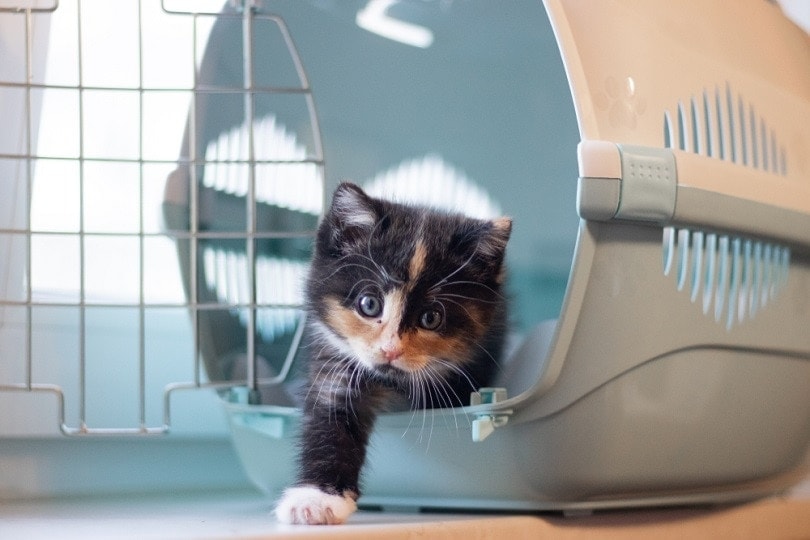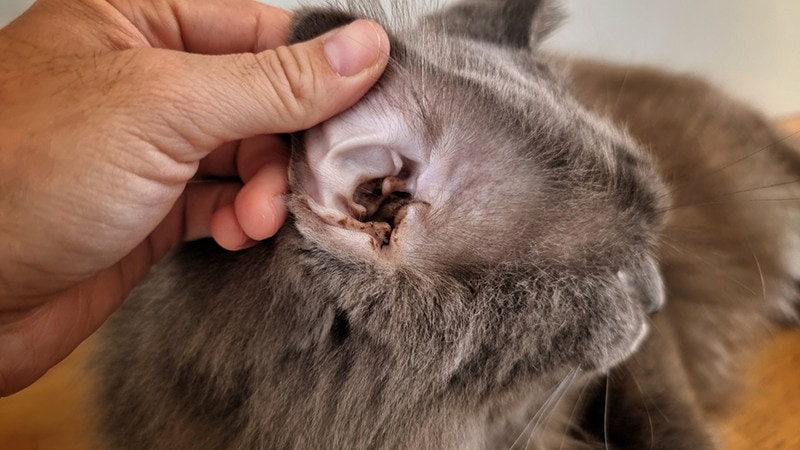8 Neurological Disorders in Cats: Vet Explained Causes, Signs & What You Should Do

Updated on

The nervous system controls local body parts and relays information from the body back to the brain. Problems in the nervous system can cause dramatic physical and behavioral changes.
Since the nervous system is so important, it can be very scary when a problem arises, especially concerning our pets. Neurological conditions can make your cat act abnormally and make them move in sometimes comically strange ways. But what neurological disorder could the cat be suffering from?
Read on to learn more about the nervous system and some cat neurological disorders and issues to be aware of.

What Exactly Is the Nervous System?
The nervous system is the brain, spinal cord, and the nerves that run from the spinal cord to the muscles and organs. There are two main nervous systems: the central and peripheral nervous system.
- Central nervous system: The brain and spinal cord comprise the central nervous system. Problems here tend to affect large parts of the body, if not the whole body, because of its central control position.
- Peripheral nervous system: The nerves running between the central nervous system and the parts of the body that the nerves control is the peripheral nervous system. For example, the infamous sciatic nerve is part of the peripheral nervous system.
Problems in the peripheral nervous system tend to affect local parts of the body. For example, a problem with the sciatic nerve affects the leg(s) but not the arms, versus a problem in the neck area of the spinal cord (or the cervical central nervous system), which can affect the arms and legs.
It’s good to remind yourself that the nervous system includes the nerves but not the muscles. So, the biceps and quadriceps are not considered part of the nervous system—the nerves that innervate them are, but not the muscles.
The 8 Neurological Disorders in Cats
1. Cancer of the nervous system
Cancer developing in the nervous system can have a wide range of effects and look extremely variable. It can strike anywhere in the system, and where it is, determines the clinical signs and their effects.
A tumor in the brain will have very different and potentially more impactful neurological effects than a tumor in the peripheral nerves, for example. However, that same peripheral nervous system tumor might be more malignant—spread faster—than the one in the central nervous system.
As such, treatment will vary depending on where it is and the type of cancer it is.

2. Epilepsy
Epilepsy in cats is when they have repeated and recurrent seizures. They might have one a week, a month, or every few months, or multiple clusters of seizures at a time. But one seizure, this one time, does not make an epileptic diagnosis.
Seizures can be caused by an injury to the head, metabolic problems, or tumors. Or they can be what is called idiopathic, where the cause is not known—yet.
Epilepsy is a scary disease. Not only is it hard to watch a cat have a seizure, but you never know when another will happen. The first part of an epilepsy diagnosis is ruling out underlying causes, such as trauma or metabolic disease.
Treatment involves treating the primary problem, or if it is idiopathic epilepsy, medication can be very helpful.
3. Cerebellar hypoplasia
This is a congenital problem; it occurs during gestation while the kitten is still in the womb. There is no cure, but most can live long, healthy lives. They just wobble and have poor coordination. They have a tremor that stays around their entire life.
It is usually caused by an infectious virus called feline panleukopenia, aka feline distemper. If the kitten becomes infected during gestation, the part of their brain that helps with coordination is affected, and as a result, they have a tremor and poor coordination.
Caring for a cat with cerebellar hypoplasia may be a little more involved than having a ‘normal’ cat. They may need to be protected from their incoordination and will probably get hurt more frequently as they bang into things. But they can be just as happy and entertaining as the next.

4. Feline infectious peritonitis
Feline infectious peritonitis is an immune-mediated disease and can affect many different systems in the body. Sometimes it infects the peripheral or central nervous system, and when it does, it causes neurological defects.
There are usually also other signs in other body systems simultaneously or before the nervous system is affected. Infection is a serious problem and needs veterinary assessment.
5. Inner ear infections
Outer ear infections are very, very common. Luckily, inner ear infections are not as common since they are much more complicated and severe. When bacteria invade the inner ear, it can put pressure on the nerves that travel right along the bony ridges of the ear canal. And in severe cases, the bacteria can spread to these nerves themselves.
When the nerves around the ear canal are inflamed or pressed upon by the inflamed tissues surrounding them, they start to miss fire and cause neurological signs.
These specific nerves are responsible for balance and proprioception. So, when they are affected, the cat struggles to keep its balance and no longer knows how to keep its body straight and upright. Often, they will develop a head tilt as they try to compensate for the one-sided neurological abnormality.
Treatment will require veterinary intervention and will not resolve on its own.

6. Progressive degenerative neurological disorder
Not much is known about how the brain changes in old age in cats. However, it is documented that as some cats get older, they have behavioral changes that suggest a degeneration of neurological function in the brain.
They need just a little extra tender loving care as they get older, and their brain starts to slow and struggles to work as effectively as they did before.
7. Rabies
Rabies is probably the most famous neurological, infectious disease. It is caused by a virus with a complex pathway to the brain that causes dramatic behavioral and physical changes. It is deadly once clinical signs start for humans and all mammals.
Happily, rabies is not as common in our cats because of highly effective and rigorous vaccine programs. However, always be aware of the danger when handling wild animals or strays.
The first signs of rabies are usually sudden and severe behavioral changes. Eventually, the cat loses control of its body and becomes completely paralyzed.
Rabies is the deadliest viral infection in the world. Get those vaccines!
8. Trauma
The results of injury to the nervous system depend on the severity and location.
If the peripheral nervous system is traumatized, then the local area that those nerves control will be affected. But if the central nervous system is injured, the whole body may be affected, possibly even death.
The nervous system is well guarded under muscles and the skeleton but not invincible. Cats that fall from high up sometimes surprise us with their resilience but can also get seriously hurt.
Common ways the nervous system can get traumatized:
- Falling
- Hit by a car
- Fighting with other animals
- Getting crushed by falling objects
- Getting stuck and tearing themselves out of it

What Are Typical Signs of a Neurological Problem in Cats?
Neurological clinical signs are specific to the nervous system, but because it controls so many things, many different problems can occur when it goes wrong.
- Tremors
- A wobbly gait
- Poor coordination
- Paralysis (either in all four legs or only one)
- Weakness
- Seizures
- Behavioral changes
- Failure to balance
- Head tilt
- Abnormal eye dilation
- Abnormal eye movement repeated patterns
How to Tell the Difference
It can be difficult to distinguish between neurological weakness and musculoskeletal pain. Both will cause a cat to use its legs abnormally. But weakness and poor coordination are the most common signs of a neurological problem. To identify weakness in a cat, watch for dragging legs or them collapsing or wobbling. A vet might need to do a physical exam to distinguish the two problems.
Final Thoughts
Neurological conditions are usually severe and need veterinary assessment. The nervous system is the body’s central control, and problems can escalate quickly. Diagnosing neurological conditions will likely require multiple tests at the veterinarian. And treatment is often long and involved.
But keeping your cat healthy and vaccinated goes a long way. Ensuring their home is cat-safe is not a guarantee, but it significantly reduces the risk of neurological problems.
Related Read:
- 8 Signs of Nerve Damage in Cats to Watch Out For (Vet Answer)
- Can Cats Have Down Syndrome? Our Vet Explains
Featured Image Credit: brodtcast, Shutterstock













